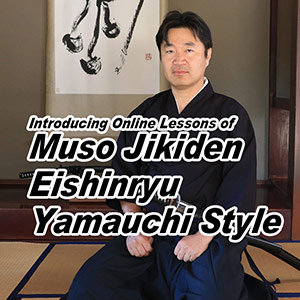Type: Mountain
Built in: 14th century
Class: Ruins
Kasugayama Castle
... is known as the castle of Uesugi Kenshin, the one of the most famous Daimyo, feudal lord, in 16th century. It was built as the castle to protect the capital of Echigo.
It is estimated that later during three successive reigns of Lord Tamekage, father to Lord Kenshin, Lord Kenshin himself and Lord Kagekatsu, the base was reconstructed and that the big citadel as we see now resulted.
A characteristic of Kasugayama Castle is the mansions that continue from Honmaru, the main bailey, at the summit to the skirts of the mountain. We can see the remains of the mansions and the keep today. Another characteristic is the outer construction of a total length of 1,200 meters that girds the castle on the plain of the mountain.
It can be said that it is a big citadel befitting, as one where he usually resided, the feudal lord of Sengoku period who dominated Kanto and Hokuriku as Governor-General of Kanto.
In this neighborhood, there once was a dry moat.
Honmaru, the main bailey
Together with the Tenshu-kaku adjoining it to the south, Honmaru was called the "Heaven" of Kasugayama Castle. The 180m elevation of the keep offers a sweeping view of the former Echigo government headquarters and the sites of subordinate castles in the surrounding mountains and Sea of Japan.
This view along the right bank of the Sekigawa river, with its scattered woodland settlements, has hardly changed since medieval times, when it was depicted in the Ecigo Kuniezu series of landscapes produced in 1597.
Ninomaru, the 2nd bailey
... is an enclosure surrounding the eastern foot of the enclosure groups called Mi-jo from Honmaru through Bishamondo to Ohanabatake, forming the center of Kasugayama Castle together with Mi-jo. The appearance of the enclosure that lies right beneath Honmaru and surrounds it like a belt seems to just show that the enclosure was built as its guard.
Sannomaru, the 3rd bailey
... was resident of Kagetora, the adopted son of Kenshin. The constructions are separated from each other by being situated on different levels. We can enter the side from the east end of "Kagetora yashiki Ato" and can see the remains of the roads where they used to walk in those days.
Kagetora, when after the death of Kenshin a revolt occurred, was defeated, coming to violent end. Today, many people who miss him visit his Yashiki Ato.
Bishamondo Shrine
... enshrines Bishamonten. Uesugi Kenshin visited and prayed his victory every time when he went to war.
Naoe Residence
According to tradition, there was a residence of the Naoe family that was chief retainer of Nagao/Uesugi clan, and three upper and lower enclosures lie between Ohanabatake and the Senkan Gate. There is an ancient road linking enclosures left, though it is not used now because of existence of a promenade.
Naoe clan served Nagao/Uesugi clan as its chief retainer for generations after the days of Takekage, Kenshin's father.
Senkan Mon Gate
The gate that was contained in every old map of Kasugayama Castle is Senkan Mon gate. This tells us that gate has been known from old times.
Still now, the earthwork is cut only at the point where the gate is estimated to have been located. A crank shaped road leads to it from the side of Kasugayama Shrine.
The point is enclosed with the earthwork and embankment on three side and, to its left, there are two open cuts that appear to be roads at a glance. In fact, they were the bottom of a dry moat and it might have been so devised that any invader would precipitate from the dry moat down the sharp-cut cliff.
How carefully this constructions had been designed, as described above, indicates that it formed a very important point separating inside, which included the keep, and outside of it.
Vertical Moat
Kasugayama castle had two types of moats such as an open-cut moat dividing a ridge into two parts to prevent an enemy's invasion and a vertical moat forming a little but deep river to isolate enclosures.
Abura-Nagashi, Oil Chute
The western slope of Tenshu-kaku, also known as Abura Nagashi, is steeply sloped to prevent invasion by the enemy.








